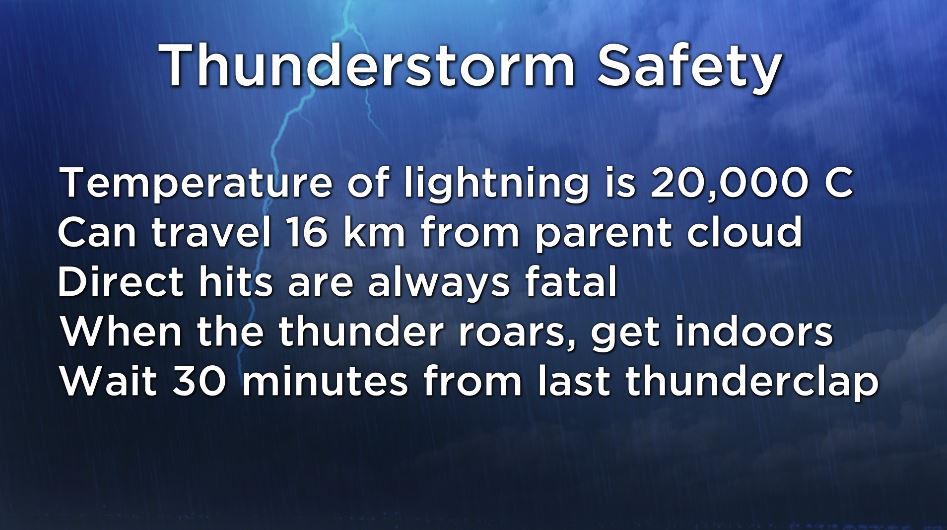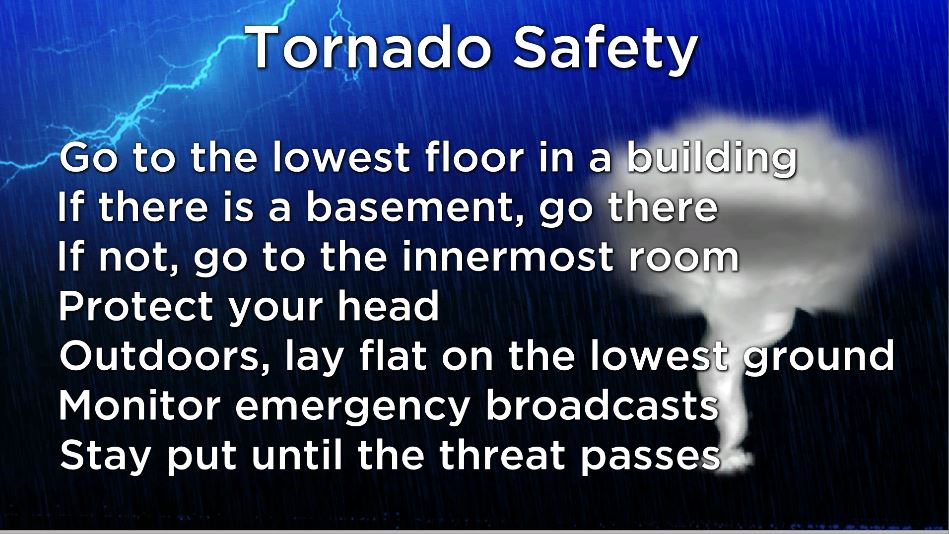Most years, Canada’s thunderstorm season begins in mid-April and goes until mid-October.

The top four months for thunderstorms in descending order are July, August, June and May. On just about any given day during summer, there is a thunderstorm somewhere in Alberta.
In Alberta, Calgary has the most days with lightning in a typical year at 26. That number is slightly less for Red Deer and Edmonton, both at 23, but Edmonton gets roughly 50 per cent more strikes than Calgary. Lethbridge averages 19 days with lightning annually. The average thunderstorm produces around 1,000 lightning flashes per hour.
According to Environment Canada, there are nine or 10 lightning deaths and 164 lightning-related injuries each year across Canada.
What to do in a thunderstorm
Take precautions whenever thunderstorms are forecast. Make sure you are up-to-date on watches and warnings and keep an eye on the sky in order to stay ahead of rapidly worsening conditions. Being prepared is the best way to ensure you’ll have time to get to a safe place to ride out the storm.
If a thunderstorm appears to be imminent, move indoors right away and stay away from windows. Flying debris can shatter glass and thunder can produce shock waves strong enough to break glass. Unplug computers and other electrical devices, do not use landline telephones and stay away from water lines as these can all conduct a lightning strike. So that means not doing the dishes, taking baths or showers, or even washing your hands.
A lightning protection system can protect your home in the event of a strike. The system should be installed by a professional and although it will reduce the probability of a direct hit under the cone of protection it provides, it is not a 100 per cent guarantee, and so you should still take all of the usual precautions.

Get daily National news
If you are in a car during a thunderstorm, pull over in a safe spot and wait for the storm to pass; do not park under trees or power lines. The metal frame of the car can provide protection in the event of a strike, providing it has a metal roof (not a convertible) by conducting the lightning to the ground. Keep your hands on your lap and try not to touch anything metal inside the car. If a power line comes down on your car, do not attempt to get out. Wait for help from first responders.
Tornadoes in Alberta
Thunderstorms also sometimes produce tornadoes. Canada averages 62 tornadoes per year coast to coast. Saskatchewan is the province with the highest number of twisters at 18, Alberta is in second place with 15, and Ontario comes in third with an average of 13 tornadoes annually. Summer is the peak month for tornadic activity.
Most tornadoes form in large thunderstorms known as supercells, but any thunderstorm has the potential to produce a twister.
The first indication of a supercell tornado is a small dimple-shaped funnel extending from a rotating lowering of cloud, known as a mesocyclone, at the base of the storm cloud. As the rotation increases, the dimple becomes a funnel, extends downward, and is officially classified as a tornado when it makes contact with the ground.
Smaller tornadoes are sometimes formed in the mesocyclone, but also form along squall lines and gust fronts when a rotating surface wind is drawn into the storm’s updraft and the spin is intensified.
Most tornadoes over the high plains, within approximately 150 kilometres of the Rocky Mountains, are of the non-supercell variety.
If tornado watches or warnings are issued, it is time to get serious about your safety and seek shelter immediately. Don’t try to get photos or video of the tornado.
The Alberta Hail Suppression Project
A single thunderstorm can result in hundreds of millions of dollars in damage from hail. The private insurance companies in Alberta completely cover the approximately $5-million cost of The Alberta Hail Suppression Project. Clouds are seeded with silver iodide in an effort to produce small hailstones as opposed to larger, more damaging ones.
According to Terry Krauss with Weather Modification International, their planes “try to seed any/all storms that threaten a town/city between High River in the south and Ponoka (north) because that is the area our radar covers very well.”
The Alberta Hail Suppression Project operates from June 1 to Sept. 15. For more information on the science behind hail suppression, check out Weather Modification International’s website.
Want your weather on the go? Download Global News’ Skytracker weather app for IOS and Android.











Comments